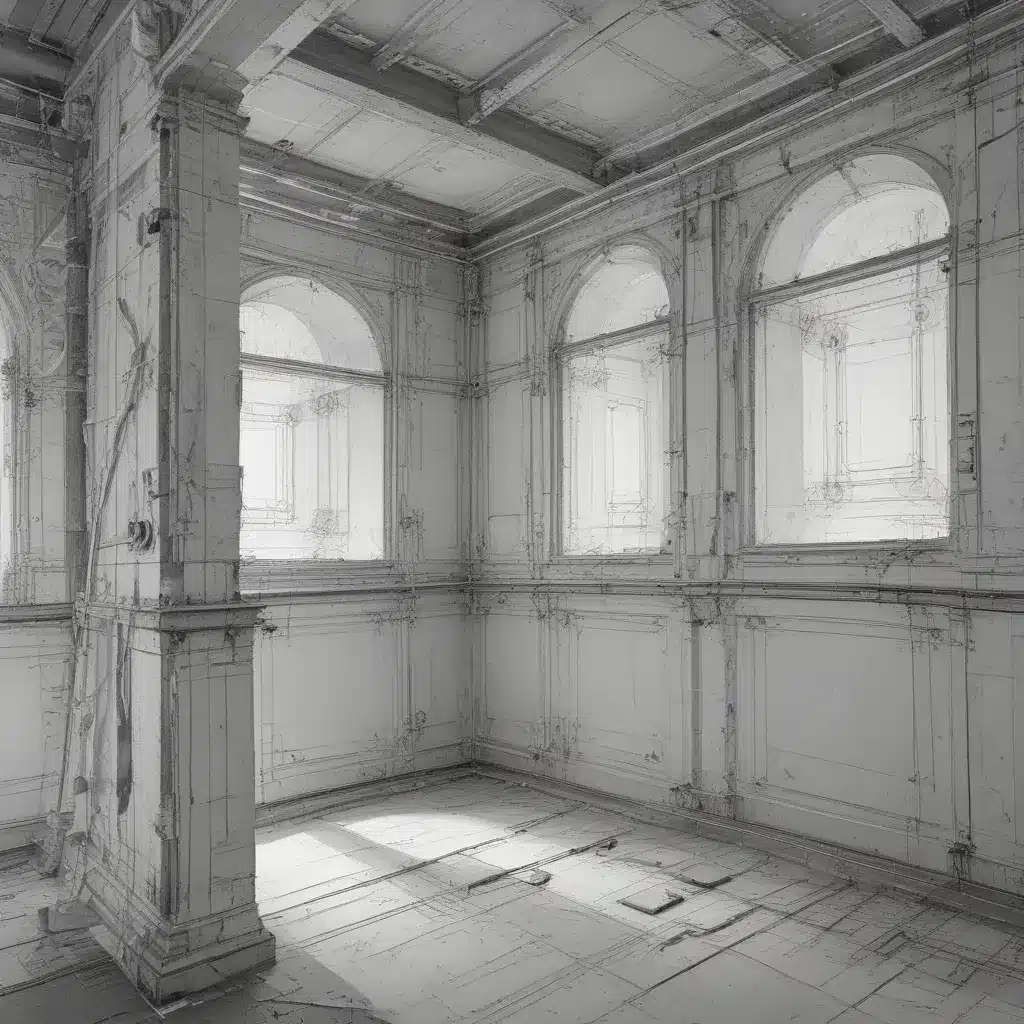
The Importance of Accurate As-Built Drawings
As someone who has been in the construction industry for quite some time, I can tell you that accurate as-built drawings are the holy grail for project managers, contractors, and facility owners alike. These detailed documents are the cornerstone of any successful construction or renovation project, capturing the true, final state of a building or infrastructure. And let me tell you, trying to work with shoddy, inaccurate as-builts is like trying to navigate a maze blindfolded – a complete nightmare.
But fear not, my fellow construction enthusiasts, for I’m here to share with you a game-changing technology that’s revolutionizing the way we approach as-built drawings: laser scanning. This remarkable tool is like having a superhuman architect on your team, capturing every nook and cranny of a structure with mind-bending precision.
Laser Scanning: Unlocking the Power of Precision
Imagine being able to create a digital twin of a building or facility, with every single detail captured in stunning 3D. That’s the power of laser scanning. This technology uses a powerful laser to meticulously map out the entire site, collecting millions of data points that are then translated into a comprehensive, highly accurate 3D model.
But why is this such a big deal, you ask? Well, let me tell you, the traditional methods of creating as-built drawings – manual measurements, hand-drawn sketches, and even basic photography – simply can’t hold a candle to the level of detail and accuracy that laser scanning provides. It’s like the difference between trying to draw a blueprint freehand and using a state-of-the-art CAD software – the laser-scanned model is simply light years ahead.
The Benefits of Laser-Scanned As-Built Drawings
Now, I know what you’re thinking: “Laser scanning sounds expensive and complicated.” And you know what? You’re not entirely wrong. This technology does require a significant investment, both in terms of the specialized equipment and the trained professionals to operate it. But let me tell you, the benefits far outweigh the costs.
For starters, laser-scanned as-built drawings are utterly comprehensive, capturing every nook, cranny, and hidden detail of a structure. This means that project managers and contractors can rest easy, knowing that they have a complete, true-to-life representation of the final product. No more guessing, no more frustrating surprises – just a rock-solid, data-driven model that they can use to plan, troubleshoot, and execute with confidence.
But the benefits don’t stop there. Laser scanning also dramatically streamlines the entire as-built documentation process, reducing the time and resources required to create these essential drawings. Gone are the days of sending out crews to painstakingly measure and sketch every inch of a building – the laser does all the heavy lifting, and the resulting 3D model can be easily converted into 2D plans or integrated into BIM (Building Information Modeling) software.
Laser Scanning in Action: Real-World Case Studies
Now, I know what you’re thinking: “This all sounds great, but how does it work in the real world?” Well, fear not, my construction-savvy friends, because I’ve got some juicy case studies to share with you.
Take, for example, the renovation of a historic government building. The client was tasked with modernizing the facility while preserving its original charm and character. Sounds like a daunting challenge, right? But with the help of laser scanning, the project team was able to create a highly detailed 3D model of the existing structure, allowing them to seamlessly integrate the new systems and technologies while ensuring that the building’s historic features remained intact.
Or how about the expansion of a major manufacturing plant? The client needed to add on to the existing facility, but they had limited as-built documentation to work with. Enter laser scanning – the team was able to quickly and accurately capture the entire plant, including all the hidden infrastructure and utilities, enabling them to design the expansion with surgical precision and minimal disruption to the ongoing operations.
The Future of Laser Scanning in Construction
Now, I know what you’re thinking: “Okay, so laser scanning is a game-changer, but what’s next?” Well, my friends, the future of this technology is nothing short of mind-blowing.
As the hardware and software continue to evolve, the capabilities of laser scanning are expanding exponentially. We’re talking about the ability to capture not just the physical structure, but also the underlying systems and utilities – everything from electrical wiring to plumbing to HVAC. Imagine being able to create a comprehensive, intelligent 3D model that not only looks like the real thing, but also knows exactly how it’s all supposed to work.
And the best part? This isn’t some far-off, science-fiction fantasy – it’s already happening. Leading construction firms and facility owners are embracing the power of laser scanning and BIM, leveraging these technologies to streamline project planning, improve efficiency, and mitigate costly mistakes.
Embracing the Laser Scanning Revolution
So there you have it, folks – the future of as-built drawings is laser-scanned, and it’s brighter than ever. But you know what they say, “Knowledge is power,” and in the world of construction, that power can translate into real, tangible benefits.
If you’re ready to take your as-built documentation to the next level, I encourage you to explore the laser scanning services offered by Construction Trade X. Their team of experts are ready to work with you, guiding you through the process and unlocking the true power of this revolutionary technology.
So what are you waiting for? Embrace the laser scanning revolution and start creating as-built drawings that are as accurate and comprehensive as the buildings themselves. Trust me, your future self will thank you.